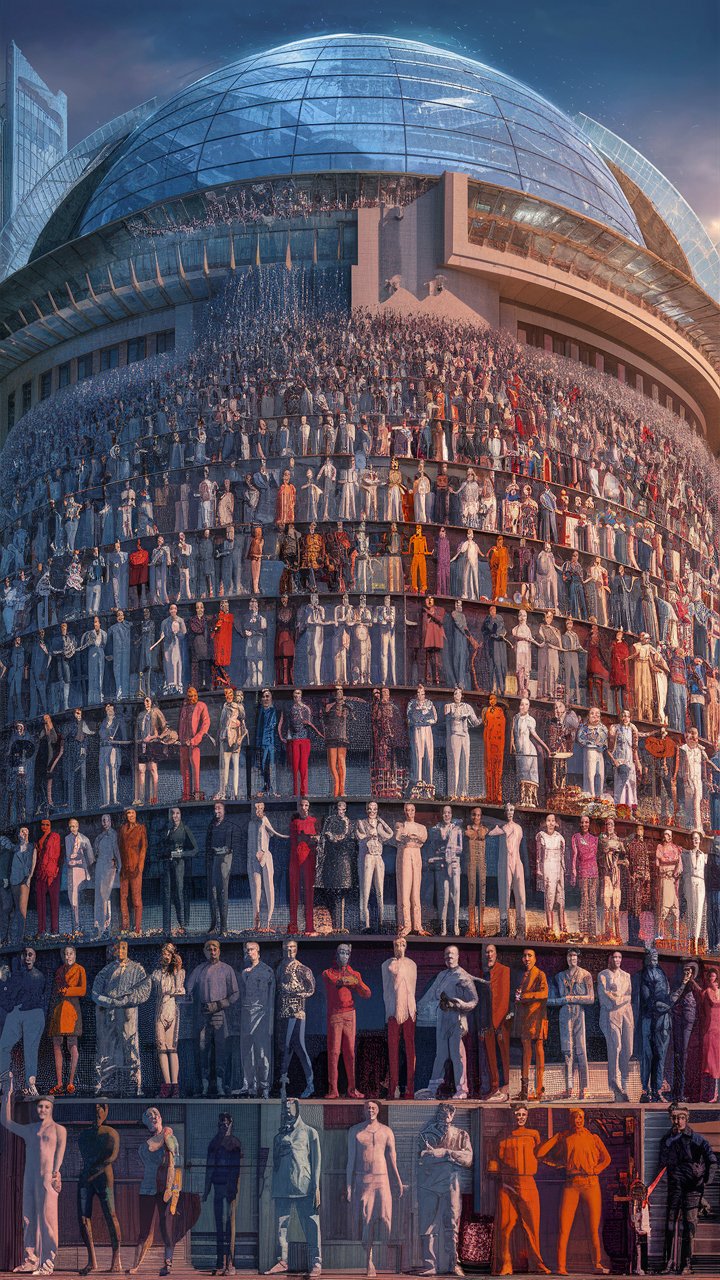
Hey everyone,
I recently came across this fascinating article on Wait But Why that got me thinking about the sheer number of people on Earth. The article, titled "7.3 Billion People, One Building," explores a fun yet mind-blowing concept: what if we could fit the entire human population into one building?
The Numbers Are Mind-Boggling
First, let's talk about the numbers. As of the time the article was written, there were around 7.3 billion people on Earth. That number is already hard to wrap your head around. Think about it: 7.3 billion! It's easy to say but hard to truly grasp.
The author of the article, Tim Urban, breaks it down in a way that's easier to understand. He compares fitting everyone into a building to more familiar things, like the size of cities and famous landmarks. It's a great way to make the concept more relatable.
How Big Would the Building Be?
So, if we wanted to fit 7.3 billion people into one building, how big would it need to be? Urban does some calculations and comes up with some surprising results. He estimates that each person would need about 1 cubic meter of space to stand comfortably. If you multiply that by 7.3 billion, you get 7.3 billion cubic meters of space.
To put that into perspective, Urban compares it to the size of the Empire State Building. The entire human population could fit into a building that takes up about 1,000 Empire State Buildings. That’s still a lot, but it's much more imaginable than thinking about billions of people spread out across the globe.
Comparing to Real-World Landmarks
Urban doesn’t stop there. He goes on to compare the space needed to fit everyone to other famous landmarks and cities. He says that you could fit the entire human population into a building that’s the size of the Burj Khalifa, the tallest building in the world, if it had 6,000 floors. Yes, 6,000 floors!
Another interesting comparison is that if everyone stood shoulder-to-shoulder, we could all fit into the city limits of Los Angeles. That’s right, all 7.3 billion of us could fit into L.A. if we were packed in tightly.
One might be wondering, why even think about this? Well, Urban's point is to make us realize just how big the numbers we often talk about really are. We hear about billions of people, but it’s hard to visualize. By breaking it down into more relatable comparisons, it becomes easier to grasp.
Why Does This Matter?
Understanding the scale of the human population can have some real-world implications. For example, it can help us appreciate the challenges of resource distribution. When you think about fitting all those people into one place, it becomes clear why managing resources like food, water, and energy is such a big deal.
It also highlights the importance of space and crowd management in urban planning. Cities are getting more crowded, and knowing how to efficiently use space is crucial for making sure everyone has a good quality of life.
While the idea of fitting everyone into one building is just a thought experiment, it’s a fun and enlightening one. It makes you think about the world in a different way. It’s easy to get caught up in our daily lives and forget just how many people are out there. Imagining everyone in one place brings a new perspective.
Final Thoughts
In the end, thinking about fitting 7.3 billion people into one building is a way to stretch our minds and understand the scale of our world better. It’s a reminder of how interconnected we all are and how important it is to think about the bigger picture.
So next time you hear a statistic about billions of people, take a moment to visualize it in a new way. Whether it’s imagining everyone standing shoulder-to-shoulder in L.A. or fitting into a super tall skyscraper, it’s a great way to appreciate the vastness of our human family.
I encourage everyone to check out the original article on Wait But Why for more fascinating insights and comparisons. It’s a great read that will definitely make you think!
Thanks for reading, and I’d love to hear your thoughts on this mind-boggling concept. How do you visualize large numbers like billions? Let’s discuss!